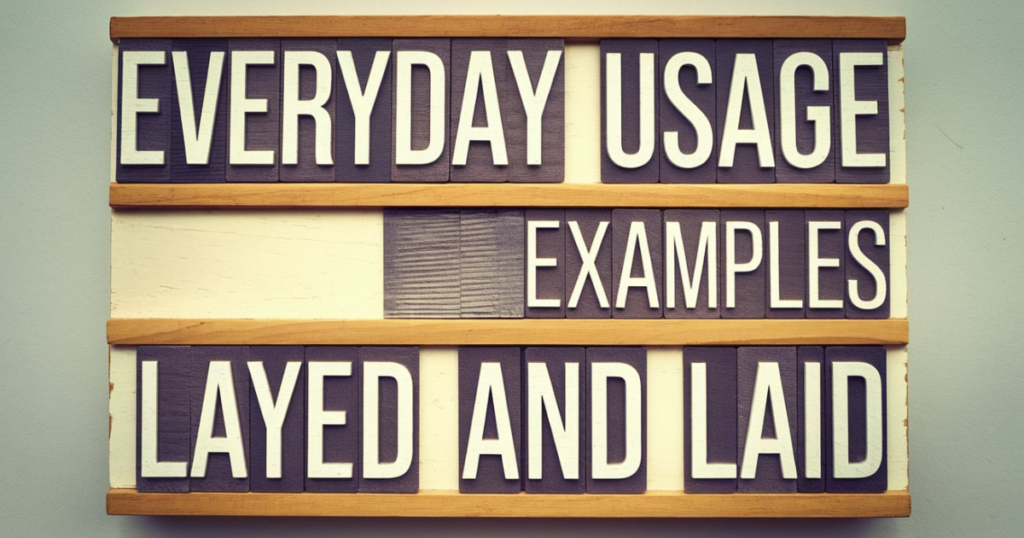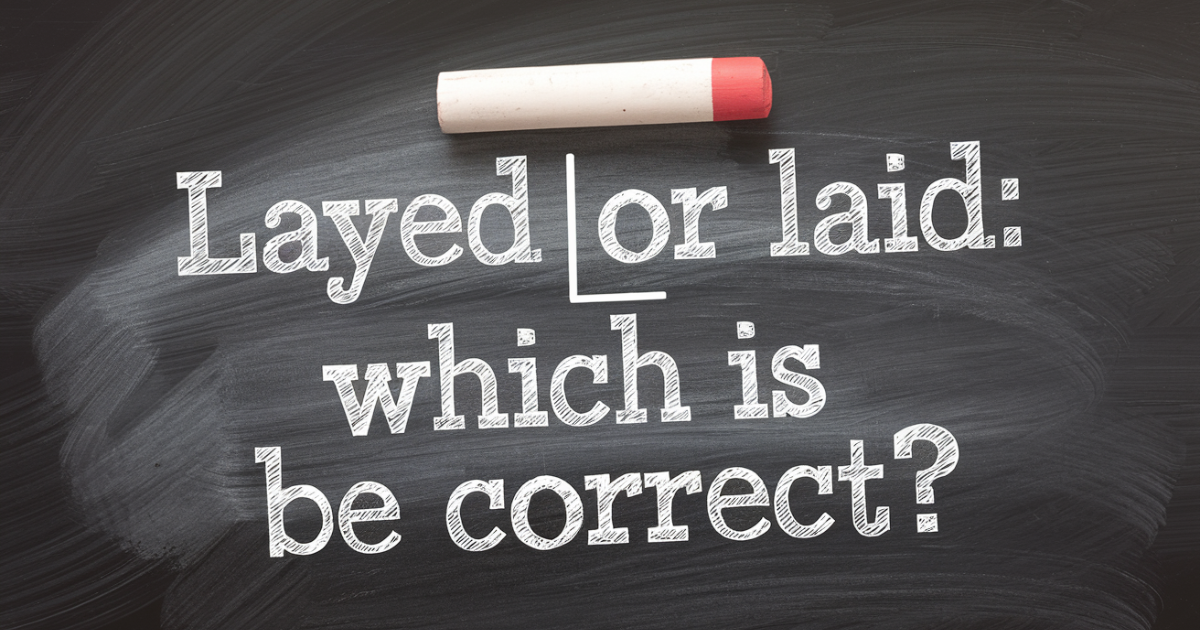When it comes to writing in English, even the simplest words can sometimes cause confusion. Layed and laid are prime examples. Both may sound correct to some, yet only one of them is actually standard in modern English. Understanding the correct use of these terms is essential for clear communication, especially since small mistakes can impact your writing’s clarity and credibility.
So, which is correct: layed or laid? The answer lies in understanding verb forms and the different ways they are used in sentences. Laid is the past tense of the verb lay, which means “to put something down” or “to place something.” While layed might look like it could fit, it’s not grammatically accepted in English. Let’s dive into the distinctions and learn how to use laid confidently.
Understanding Layed And Laid

Layed: Definition and Usage
Layed is an incorrect spelling of laid, the proper past tense of the verb lay, which means “to place something down.” Despite its frequent use in informal writing, layed is not accepted in standard English. People often confuse the two because they sound similar, but laid is the only correct form.
Using layed can make your writing seem less polished, especially in professional settings. To communicate clearly, remember that laid is always the proper choice when describing an action of placing something down.
You Also Like To Read This: Of Course Or Off Course: Which One Should You Use?
Laid: Definition and Usage
Laid is the correct past tense of the verb lay, meaning to put or place something down. It’s used when referring to an action done to an object or person. Unlike layed, laid is the standard and grammatically correct form.
Examples:
- She laid the book on the table before leaving.
- They laid out the tools for the project.
Difficult To Know
It can definitely be tricky to remember which word to use, especially when “lay” and “laid” sound so similar. A good tip is to think about whether there’s a direct object (something being acted on).
If you’re talking about putting something down, like “laid the book,” use “laid.” If it’s simply about lying down without an object, like “I lay down,” use “lay.” Repeating examples out loud can help make the difference clearer over time.
Side-by-Side Comparison
| Word | Correctness | Definition | Usage Example |
| Layed | Incorrect | Incorrect past tense of lay | ✘ She layed the blanket on the bed. |
| Laid | Correct | Past tense of lay, meaning to place something | ✔ She laid the blanket on the bed. |
In English, laid is the correct past tense form of the verb lay, meaning “to put or place something down.” Many mistakenly use layed due to its similar pronunciation, but it is incorrect and nonstandard. Understanding this distinction is important for clear and polished writing, as layed can make your text seem less professional.
Remember, whenever describing the action of placing something, use laid. This correct form enhances readability and maintains grammatical accuracy.
Everyday Usage Examples

- She laid the keys on the counter when she got home.
- He laid the foundation for the new building last summer.
- The teacher laid out the lesson plan for the week.
- They laid the picnic blanket on the grass before eating.
Incorrect Everyday Usage Examples:
- She layed the keys on the counter when she got home.
- He layed the foundation for the new building last summer.
- The teacher layed out the lesson plan for the week.
- They layed the picnic blanket on the grass before eating.
FAQs
When to use laid or layed?
Use laid as the past tense of lay, meaning to place something down. Layed is incorrect and should be avoided in writing.
Is it laid or layed in bed all day?
The correct phrase is laid in bed all day, referring to the action of placing oneself in bed. Layed is not an acceptable form in this context.
Is laid a correct word?
Yes, laid is a correct word and the proper past tense of the verb lay. It is used to describe the action of placing something down.
Is laid on the bed correct?
Yes, laid on the bed is correct when describing the action of placing something on the bed. This usage follows standard grammatical rules.
Conclusion
In summary, understanding the distinction between laid and layed is essential for clear and effective communication. Laid is the correct past tense of lay, used to indicate the act of placing something down. In contrast, layed is incorrect and should not be used in standard English.
Proper usage of laid enhances your writing and reflects attention to detail. By using the right form, you can avoid confusion and maintain professionalism in your communication. Remember, when in doubt, opt for laid to ensure grammatical accuracy.

Grammerlytips.com, authored by Jame, offers expert tips and insights on mastering grammar, enhancing writing skills, and boosting communication effectiveness.

